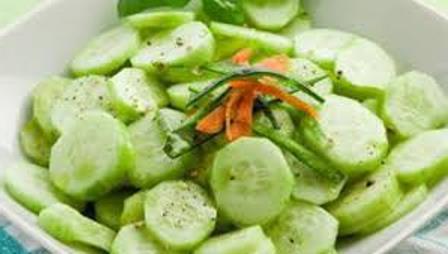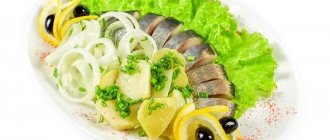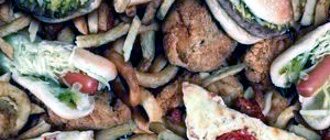Fresh vegetables are a source of vitamins and minerals, antioxidants and amino acids. They should be consumed by people of all ages, healthy and sick. But some ailments require rather strict restrictions that even apply to summer fruits. Today we’ll talk about whether or not you can eat tomatoes for pancreatitis. This question is especially relevant at the beginning of July, when red-sided beauties appear in the beds and on the shelves. Some nutritionists believe that you should completely give up tomatoes, but most doctors allow them to be included in the diet, albeit with minor restrictions.
Inflammation of the pancreas
This is what is meant by the term “pancreatitis”. This tiny organ is very important in the digestive process, as it produces the necessary enzymes. If its functioning is already significantly difficult, then you have to adhere to a strict diet and undergo mandatory treatment. However, this does not eliminate the need for a nutritious and varied diet. And in the summer, cucumbers and tomatoes are the most affordable and delicious side dish. Bright and juicy, they will replace many boring dishes that you get tired of over the winter. Let's figure out whether tomatoes are okay or not for pancreatitis.

What ingredients are ketchup made from?

Tomatoes are washed, crushed, heated to a temperature of 95 degrees and processed through a sieve or a special mechanism that removes grains and peel from the product. The resulting mixture is then evaporated to a paste or puree. The resulting natural tomato paste is mixed with water, seasonings, spices and ketchup is prepared. A good ketchup should contain at least 40% tomato paste. The economy version contains only 15% of the paste of the total mass of the product. The rest of the ketchup may be applesauce, plum or beet puree, starch, gum, flour, citric acid and vinegar. At the same time, non-natural synthetic starch and gum are mainly used in the production process of the product.
Industrial ketchup may also contain
- flavorings;
- stabilizers;
- preservatives;
- flavor enhancers.
Depending on the type of product, onions, garlic, peppers, carrots, mushrooms, and olives can be added to it.
During exacerbation
The disease can occur in different forms. The neglected inflammatory process leads to the disease becoming chronic. Even a minor diet violation can lead to an exacerbation. This period is characterized by severe pain. To alleviate the condition, the patient is prescribed a diet. Is it possible or not to eat tomatoes for pancreatitis at this time?
Most vegetables in the acute phase are given to the patient in boiled and pureed form, and then no earlier than a week after the attack has stopped. These are zucchini and pumpkin, carrots. But if you ask whether tomatoes are ok or not for pancreatitis in the acute phase, then most likely the doctor will say that you need to completely avoid them.
Causes
Any competent nutritionist will explain why he makes such adjustments to the diet. There are objective reasons for this. Speaking about whether it is possible to eat fresh tomatoes with pancreatitis, it is necessary to remember that in the acute phase of this disease, rest of the pancreas is indicated. That is why any products that may cause irritation to the mucous membranes are excluded. Now it is important to give the gastrointestinal tract the opportunity to recover, which means it is necessary to minimize the load.
The second point is the presence of toxic substances in tomatoes. If for a healthy person this is practically imperceptible, then it can cause a noticeable blow to a sick gastrointestinal tract. Nutritionists answer in detail the question of whether tomatoes are ok for pancreatitis and gastritis, emphasizing that unripe tomatoes pose the greatest danger. Even after heat treatment, toxins remain. Therefore, choose the vegetables for your table carefully.

Tomatoes are prohibited
To summarize what has been said, we can confidently answer the question “is it possible or not to have fresh tomatoes for pancreatitis.” They are completely incompatible with the acute phase. Until good treatment results are achieved, you will have to control yourself. And don’t decide for yourself when you can treat yourself to a fresh vegetable. Only a doctor can decide this based on tests. Therefore, do not forget that you need to come to a specialist not only to prescribe a course of treatment, but also to monitor the dynamics.
As you recover
If the treatment has given good results, the pain has completely gone away, and all tests are normal, then you can gradually switch to a normal diet, which means you can begin to introduce new foods to the menu. As for tomatoes, everything is much more complicated. They are strictly forbidden to be eaten without heat treatment. No matter how much time has passed since the exacerbation, there is still a danger that you will provoke a new attack.
Thus, the answer to the question of whether it is possible to eat tomatoes with chronic pancreatitis is as follows: you should definitely forget about fresh ones, but they can be steamed or baked in the oven. Be sure to peel the tomatoes and grind the pulp into a puree. If these conditions are met, tomatoes and the pancreas may well become friends.
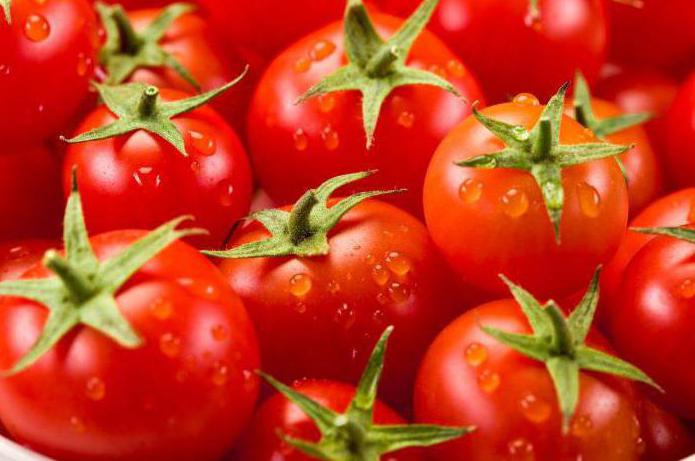
The benefits and harms of tomatoes
In the summer, many people replenish their vitamin reserves and do this with fruits and vegetables. As for tomatoes, they are included in many dishes.
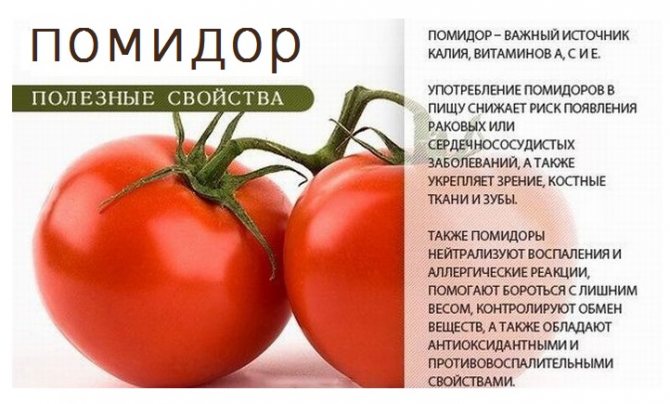
Fresh tomatoes contain many beneficial substances, for example:
- iron;
- mineral salts;
- potassium;
- vitamins;
- fiber.
Thanks to this composition, tomatoes quickly activate metabolism and also remove cholesterol from the body well. In addition, a tasty and juicy vegetable will lift your spirits and prevent depression.
No matter how good everything is, there are also disadvantages. During periods of exacerbation of pancreatitis, it is better not to consume tomatoes in large quantities. Especially if the vegetable was bought in a store and went through all the stages of chemical processing.
We introduce it into the diet gradually
This is another principle to follow when expanding your menu. Whether or not you can eat tomatoes for chronic pancreatitis, we have already discussed above, but the body’s reaction may be different. Therefore, tomatoes prepared in the oven should be introduced into the diet in small portions. To start, one teaspoon is enough. If no negative reaction occurs, then you can continue to eat one fruit per day.
And again we need to add that if you have pancreatitis, then you can only choose ripe vegetables. Brown and especially green tomatoes should be excluded from the diet once and for all. Store-bought, greenhouse tomatoes, and especially those sold in winter, should not be eaten either. They contain large amounts of nitrates and other harmful substances that are harmful even to a healthy person.
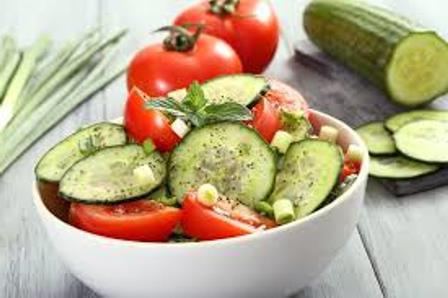
Tomato paste
Every housewife knows that many delicious dishes can be prepared from tomato paste.
But what if you have pancreatitis? So, tomato paste is produced industrially, so it is included in the list of prohibited products. Why? It would seem that the paste is not capable of causing harm if you put a little of it in a dish.
Most unscrupulous manufacturers use many not very useful substances in the process of preparing tomato paste. It is preservatives and various dyes that can cause a severe exacerbation of the disease.
Of course, this does not mean that a patient with pancreatitis needs to completely abandon the paste. It can be prepared at home.
Chief gastroenterologist of the Russian Federation: “PANCREATITIS does not go away?! A simple treatment method has already healed hundreds of patients at home! To cure the pancreas forever you need...” Read more »
For example, take fresh tomatoes, rinse them well and put them through a juicer or run them in a blender. Pour the resulting tomato juice into a saucepan and then boil for 4 hours.
Also read: What fruits can you eat if you have pancreatitis?
During the boiling process, you will notice how the tomato begins to thicken. Once the paste is ready, place it in sterile jars. You can store homemade pasta in a cool place, for example in the basement, or on the balcony in winter.
Homemade preparations
If a person with pancreatitis avoids eating store-bought pickles, he considers homemade pickles to be a lesser evil and is not averse to enjoying them. This is actually true, but only if we are talking about the digestive system of a healthy person. You already know the answer to the question “can you eat tomatoes for pancreatitis if they are fresh?” as for marinades and other snacks, we must disappoint you. Any canned tomatoes are prohibited, even if there are no symptoms of the disease. This list includes pickled vegetables, salted, stuffed and even in their own juice. The reason is simple: they contain a large amount of salt, citric acid and food vinegar, and various spices. Ketchups, tomato paste and sauces from the store are contraindicated even for completely healthy people, not to mention cases of chronic or acute pancreatitis.

Possible harms of consuming ketchup
Ketchup is a product with an increased risk of allergenicity. An allergic reaction can be expressed as:
- skin rash;
- redness;
- itching;
- digestive disorders.
For this reason, the product is not recommended for pregnant and nursing mothers.
Even a natural product, if consumed in excessive quantities, can harm the body. Using ketchup in large quantities can lead to:
- Increased acidity of gastric juice.
- Development of gastritis, ulcers.
- The product can also cause heartburn, acid belching, flatulence, and bloating.
Low-quality ketchup has a particularly negative impact on health. It contains a lot of salt, spices, sugar, starch, preservatives and thickeners, flavorings that irritate the walls of the digestive organs and can cause dyspeptic disorders: flatulence, colic, bloating, nausea and increased gas formation.
| Components | Properties |
| Sugar and food additives | Contributes to obesity. |
| Salt, spices, preservatives | They retain moisture in the body, which contributes to the development of swelling and increased blood pressure. |
| Saturated harmful chemical additives | May provoke the development or aggravate gastritis, ulcers, colitis. |
| Spicy seasonings and garlic | May cause heartburn, flatulence, and indigestion. |
Therefore, it is best to use a natural product prepared at home, or premium store-bought ketchup. When purchasing a sauce, you must pay attention to the composition of the product and the percentage of tomato paste present in it.
Permissible dosage
Let's ask the doctors how many tomatoes are permissible to eat during chronic pancreatitis, outside the exacerbation phase. The maximum amount per day is 100 grams. In this case, vegetables must be heat-treated and ground. And you need to start with a much smaller dose. What about tomato juice? Can a person with pancreatic diseases use it? Doctors say that it is even necessary, since it stimulates the proper functioning of this organ. But be sure to dilute it with pumpkin or carrot.
Recipe for homemade tomato sauce without spices
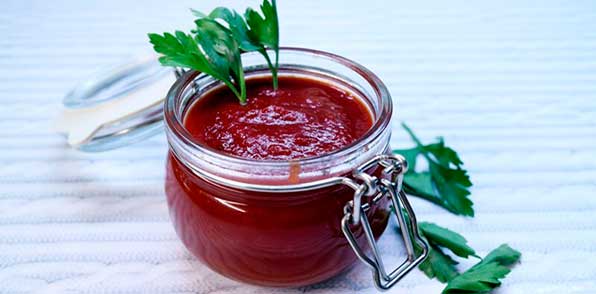
Components:
- one and a half kilograms of ripe good tomatoes (not sour varieties);
- one sweet bell pepper;
- 300 ml water;
- a tablespoon of flour;
- a level tablespoon of sugar;
- 100 grams of dill;
- 100 grams of parsley;
- salt to taste.
Wash tomatoes, peppers, dry and cut into pieces. Pass the chopped tomatoes and peppers through a meat grinder or blender. Then pass the tomato mixture through a sieve to remove seeds and skins. To make this task easier, you can gradually add cold boiled water to the sieve.
Transfer the resulting tomato mass into a non-enamel pan, add 300 ml of water (or the remaining liquid after preparing the puree) and put on fire. Cook over medium heat for two hours. During cooking, the pasta should be stirred constantly so that it does not burn.
Then add salt and sugar to the paste and mix everything well. Add flour slowly, pouring it through a sieve and stirring constantly. Boil the sauce for another hour, then add chopped dill and parsley and simmer for another 7-10 minutes. Then pour homemade ketchup into a glass jar. Keep refrigerated.
This ketchup can be used with meat, pasta, spaghetti, or simply spread on a piece of white bread.
Cucumber for pancreatitis
This is where no one expects restrictions. This vegetable consists of 95% water, how can it harm? It turns out it can. The fact is that it is a source of coarse fiber, which is quite difficult to digest. It is because of this that it is undesirable to eat cucumbers during the acute phase of the disease, so as not to harm the weakened organ.
Even when an acute attack is relieved, or during a chronic course of the disease, cucumbers should be introduced into the diet gradually. The reason is the same: hard-to-digest fiber. At the same time, nutritionists recommend eating no more than half a vegetable per day. And then only on condition that there have been no painful attacks for a long time. Be sure to choose young fruits, remove the skin and grate the pulp. In this form, the vegetable can become a source of nutrients and will not overload the body. It is worth noting that this is one of the best helpers in the fight against excess weight, so it is worth including it in your diet.
